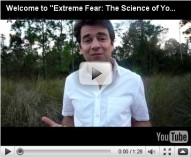 The massive tremors and ensuing tsunami that devastated Japan earlier this month was an order of magnitude more destructive than anything that has hit the continental Unites States in historical times. But seismologists say that a similar event could well strike here. In fact, it’s only a matter of time. And compared to Japan, we’re far less prepared to deal with the consequences.
The massive tremors and ensuing tsunami that devastated Japan earlier this month was an order of magnitude more destructive than anything that has hit the continental Unites States in historical times. But seismologists say that a similar event could well strike here. In fact, it’s only a matter of time. And compared to Japan, we’re far less prepared to deal with the consequences.
The danger zone is not California. While Los Angeles and San Francisco suffer frequent damaging quakes, they owe their seismic woes to a relatively shallow phenomenon called a slip-strike fault, caused by two tectonic plates sliding against each other. Sendai was a result of something far more dangerous: a so-called subduction zone, a deep-lying discontinuity caused by one plate slowly burying itself under another.
In both cases, earthquakes are caused by the slow building of pressure as the two plates move relative to one another, but remained locked together at the fault line. The strain increases steadily until the fault gives way, releasing the energy in the form of an earthquake. While strike-slip faults are relatively shallow, a subduction fault is deeper and can release a lot more energy. “One of the signatures of this type of fault,” says Mike Blanpied, associate director of the US Geological Survey’s Earthquake Hazards Program, “is that they sit quietly until they create a giant quake.”And by giant, he means monster. The Sendai event contained more than 30 times the energy of the San Francisco Earthquake of 1906.
Only one such region lies within the Lower 48. Read the rest of this entry »
Filed under: disaster, Cascadia Subduction Zone, disaster, earthquake, Sendai


